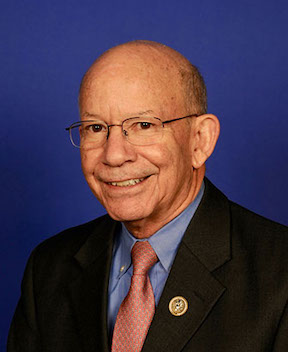Pilots facing confusing new 5G restrictions, union chief says
Airlines and flight crews have been forced to sift through scores of new restrictions since last month’s chaotic roll-out of new 5G wireless service, aviation industry officials told lawmakers Thursday.
Flight precautions imposed by the Federal Aviation Administration can vary by different runways at the same airport, according to testimony at the Transportation and Infrastructure Committee’s aviation panel.
Pilots are forced to perform extensive workarounds that “we expect will be needed for the foreseeable future,” Joe DePete, president of the Air Line Pilots Association, said in prepared remarks. “This is no way to run a railroad, and it’s certainly no way to operate the world’s safest air transportation system.”
At the same time, wireless companies AT&T Inc. and Verizon Communications Inc. that spent about $80 billion for the rights to the new C-band airwaves, have had to hold off on activating hundreds of cell towers near airport runways as the FAA assesses the potential for interference on aviation equipment.
“The truth of the matter is that both of our industries have been thrust into this avoidable economic calamity by a government process that failed,” Nicholas Calio, president of the Airlines for America trade group, said in prepared testimony.
Broken System
A top House lawmaker called the U.S. government’s process of auctioning radio spectrum “completely broken” as wireless and aviation groups presented starkly different views of last month’s chaotic roll-out of new 5G wireless service.
Representative Peter DeFazio, the Oregon Democrat who is chairman of the committee, said the Federal Communications Commission had no plan in place to deal with what he called well known safety issues.
“Having a dropped call is way less serious than having a dropped airplane out of the sky,” DeFazio said.

A panel of witnesses appearing before the committee praised ongoing technical work between the two sides, but differed markedly on the potential risks to aviation and the impacts to the aviation system from the high-speed mobile phone service introduced Jan. 19.
U.S. safety regulators have received more than 100 pilot reports of possible interference from 5G wireless signals—including three near Chicago O’Hare International Airport—since the new mobile phone service began less than two weeks ago.
The reports of anomalies on aircraft devices known as radar altimeters are being reviewed by the FAA, said three people familiar with the matter who weren’t authorized to speak about it. Interference from the new 5G service has been ruled out in many of the cases, one of the people said, and it remains unclear whether the others indicate a safety hazard or just pilots being overly cautious.
Reform Needed
DeFazio and other lawmakers at the hearing in Washington said that the process of how FCC awards frequencies may need to be reformed to stem the kind of conflicts with other agencies and industries that occurred in recent months.
“I think everyone realizes the process didn’t serve anyone well,” said FAA chief Steve Dickson, the committee’s first witness.
Dickson said the FAA had been asking for more information from FCC to be able to assess 5G’s impacts for more than a year before they received a response. Even then, the FCC didn’t have the needed data and the aviation agency had to turn directly to wireless companies, he said.
New 5G service operates on frequencies that are close to those used by aircraft devices known as radar altimeters, which show how far a plane is off the ground.
The FAA says research shows that the 5G signals have the potential to interfere with the altimeters, which perform a wide variety of navigation and safety functions.
Meredith Attwell Baker, president and chief executive officer of the wireless industry trade group CTIA, called the evidence of interference “flawed.”
The FCC “conducted a rigorous analysis and found no harmful interference” from the C-band frequencies used for 5G, she said in her prepared remarks.
The FAA has cleared about 90% of aircraft to operate near 5G signals across the U.S., partly as a result of an agreement by the wireless companies to limit placement of cell towers near runways. At some major airports, including New York’s John F. Kennedy and New Jersey’s Newark Liberty, the percentage is only 81% because of the mix of aircraft, the agency said Wednesday.
As a result, there have been relatively few flight diversions or cancellations.
Faye Malarkey Black, who heads the Regional Airline Association, said the smaller aircraft used by its members haven’t received as many FAA clearances, putting them at greater risk of flight cancellations if bad weather hits.
“Leaving dozens of airports and millions of passengers vulnerable to sweeping disruptions is unsustainable and unacceptable,” Black said in her prepared remarks.
FCC Chairwoman Jessica Rosenworcel was invited to testify but had a schedule conflict, DeFazio said.
Similar Stories
BTS to will begin releasing preliminary estimates of airline passenger travel in 2025
Monthly passenger enplanement numbers are not reported by the carriers and published by BTS for the month until more than a month later. BTS developed a model, which uses a…
View Article
Ambercor Shipping participated in air charter transport from Canada to Australia
View ArticleCass Information Systems acquires AcuAudit Platform from Acuitive Solutions
Cass Information Systems, Inc. (Cass), the leading global provider of freight audit & payment solutions, has acquired AcuAudit, the premier freight audit platform for ocean and international air freight, from…
View ArticleLos Angeles Industrial CRE Market Update – 4th qtr. 2024
TEU and airfreight numbers continue to improve, but excess capacity has muted any genuine change to the state of the leasing market.
View Article
CPaT announces new major partnership with “Saudia Academy”
View Article[Freightos Weekly Update] Mexico increases trade barriers for Chinese imports
Ocean rates out of Asia overall trended up slightly to end the year, but with Lunar New Year approaching and a range of January transpacific GRIs announced, prices could face…
View ArticleGet the most up-to-date trending news!
SubscribeIndustry updates and weekly newsletter direct to your inbox!




